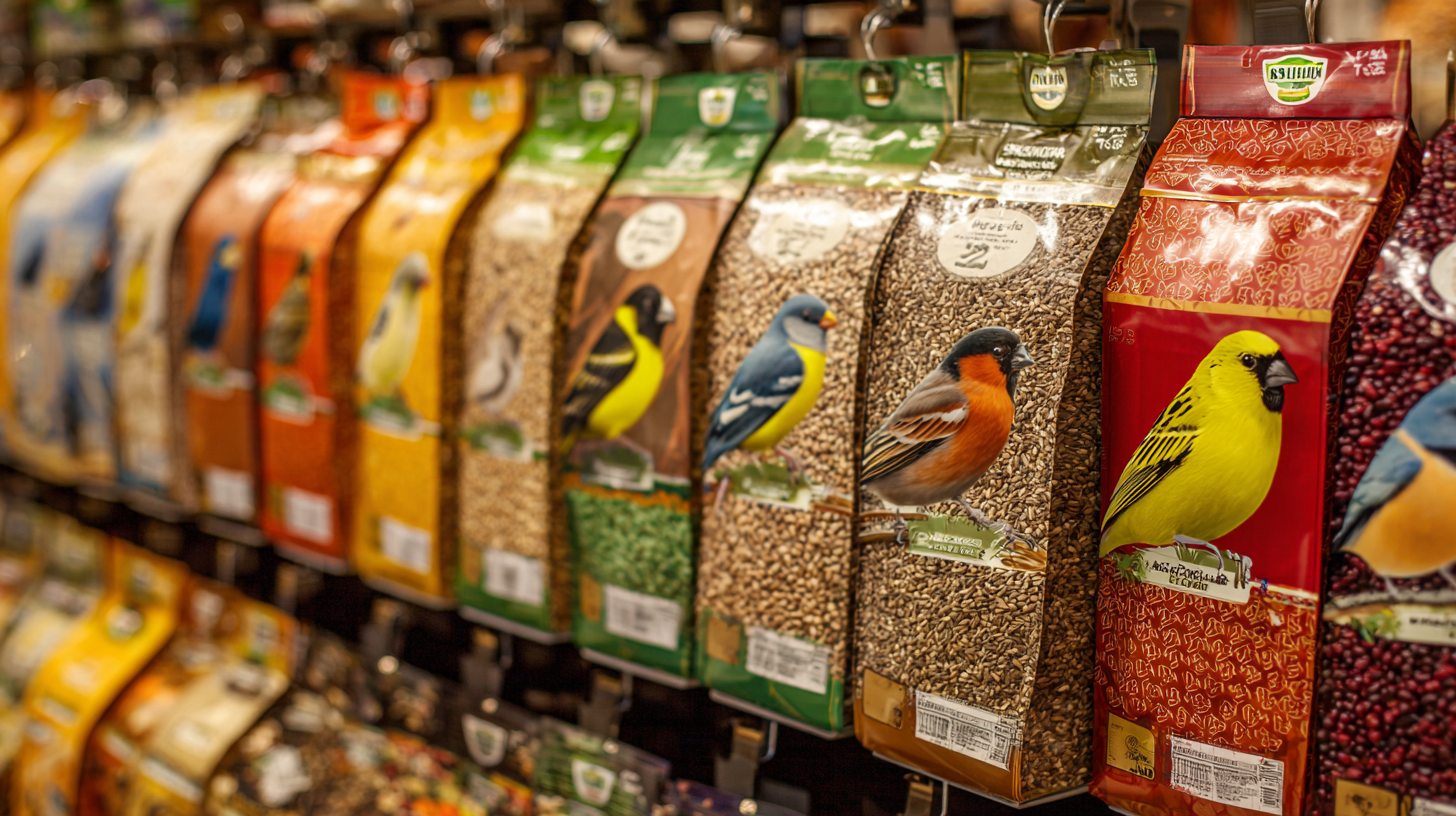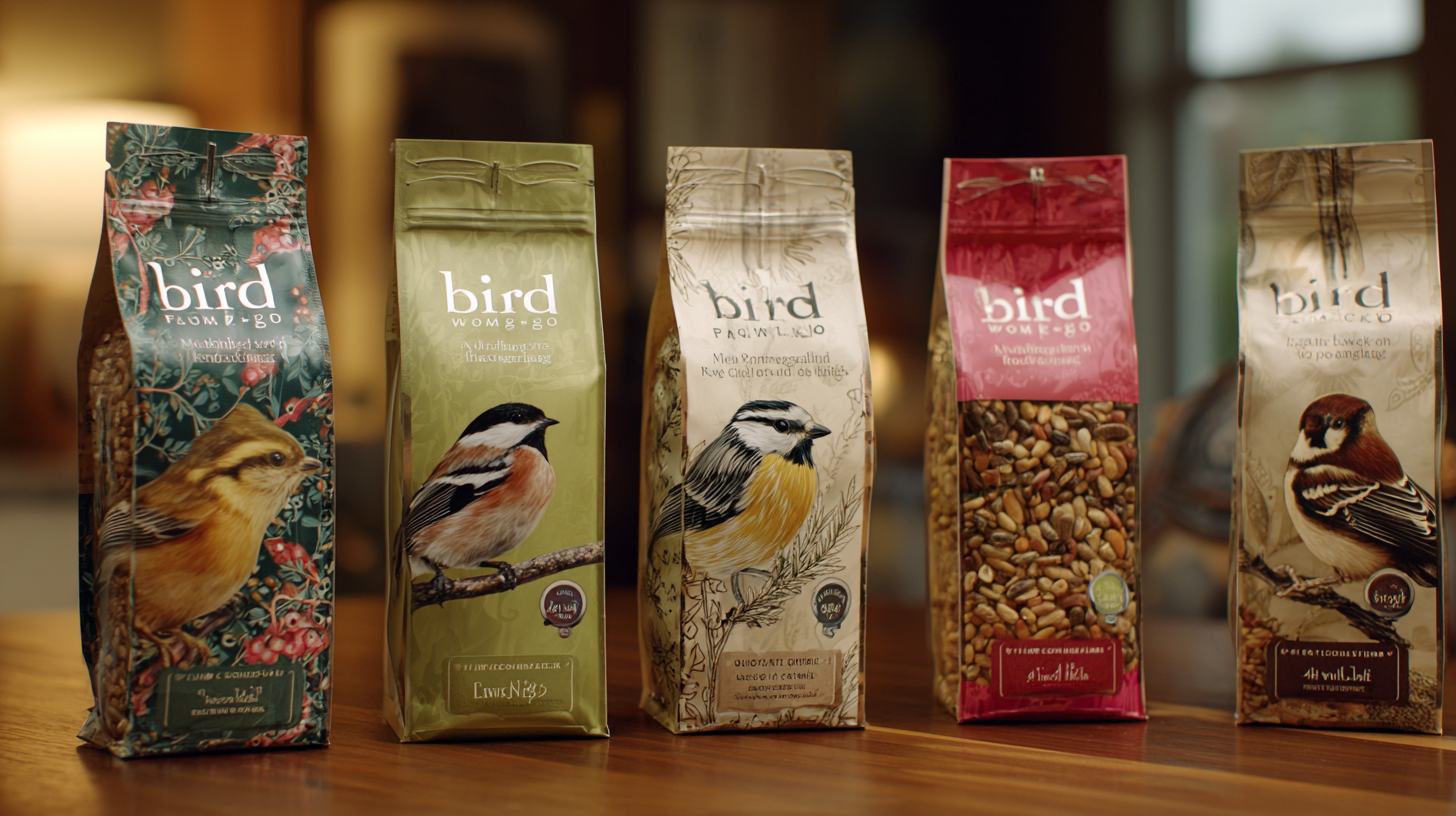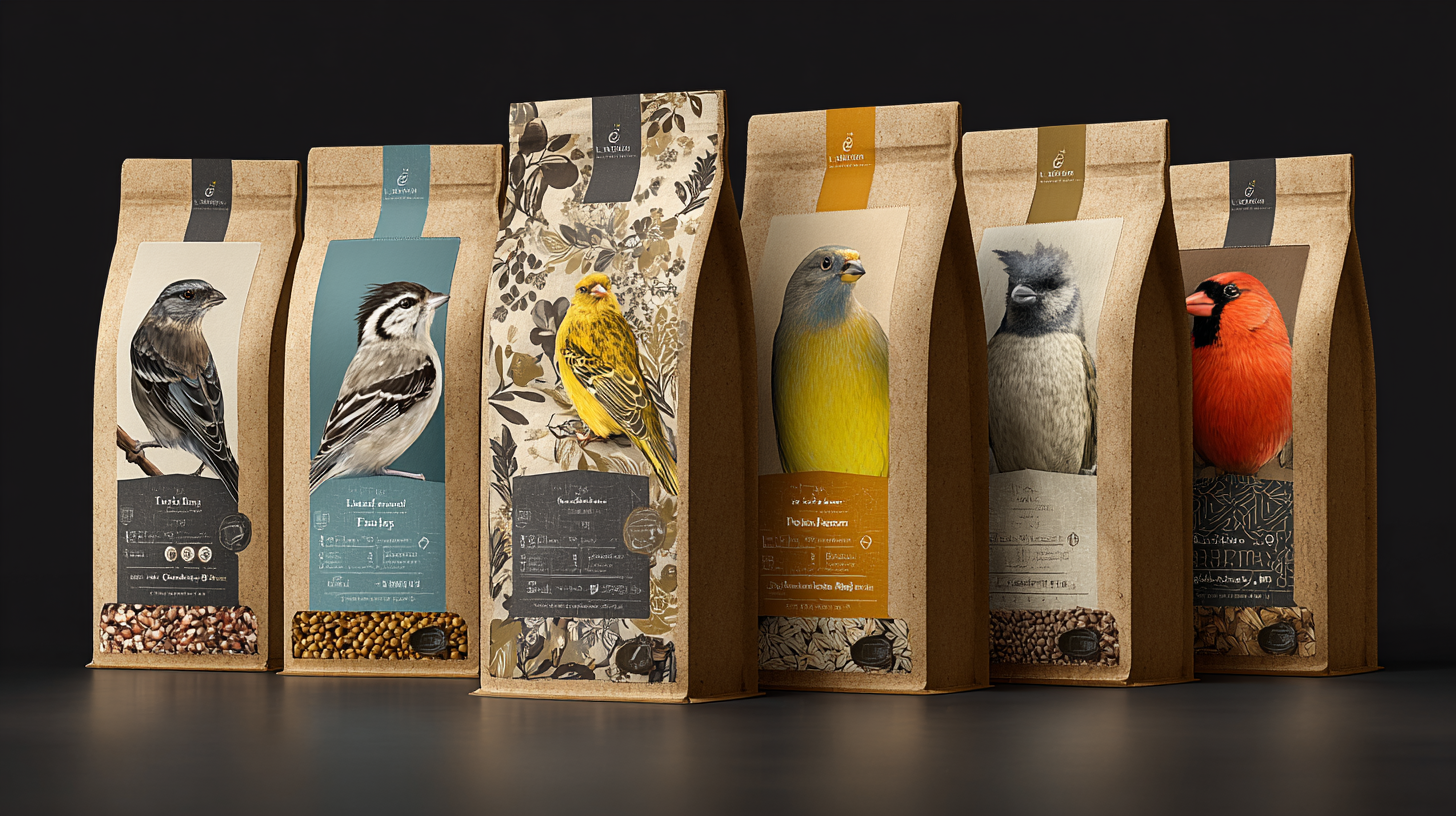Ultimate Guide to Evaluating the Best Bird Food Packaging Options
When it comes to selecting the best bird food packaging, understanding the variety of alternatives available is crucial for retailers and consumers alike. According to a recent report by Smithers Pira, the global pet food packaging market, which includes bird food, is projected to reach $22.1 billion by 2023, driven by increasing demand for environmentally friendly and user-friendly packaging solutions.
 As consumers become more environmentally conscious, the need for sustainable materials, such as biodegradable plastics and recyclable options, is surging, with 60% of consumers reportedly willing to pay more for eco-friendly packaging. Furthermore, the functionality of bird food packaging—ensuring freshness and preventing pest contamination—is essential for maintaining product integrity and customer satisfaction. In this ultimate guide, we will explore various types of bird food packaging alternatives, their advantages, and how to choose the best option to meet both ecological needs and consumer preferences.
As consumers become more environmentally conscious, the need for sustainable materials, such as biodegradable plastics and recyclable options, is surging, with 60% of consumers reportedly willing to pay more for eco-friendly packaging. Furthermore, the functionality of bird food packaging—ensuring freshness and preventing pest contamination—is essential for maintaining product integrity and customer satisfaction. In this ultimate guide, we will explore various types of bird food packaging alternatives, their advantages, and how to choose the best option to meet both ecological needs and consumer preferences.
Understanding the Importance of Bird Food Packaging
 Bird food packaging plays a crucial role in maintaining the freshness and quality of the food while also ensuring the safety of our feathered friends. Choosing the right packaging is essential not only for preserving nutritional value but also for protecting the food from pests and environmental factors. A well-designed package prevents moisture and air exposure, which can lead to spoilage and loss of nutrients. Understanding the importance of packaging helps bird owners make informed decisions that ultimately benefit the birds.
Bird food packaging plays a crucial role in maintaining the freshness and quality of the food while also ensuring the safety of our feathered friends. Choosing the right packaging is essential not only for preserving nutritional value but also for protecting the food from pests and environmental factors. A well-designed package prevents moisture and air exposure, which can lead to spoilage and loss of nutrients. Understanding the importance of packaging helps bird owners make informed decisions that ultimately benefit the birds.
When evaluating bird food packaging options, consider looking for resealable bags or containers that offer airtight seals. This feature is vital for keeping the food fresh longer and preventing contamination. Additionally, opt for packaging materials that are biodegradable or recyclable, as this minimizes environmental impact and promotes sustainability.
It’s also beneficial to check for clear labeling that provides information about the ingredients and expiration dates. Transparent packaging enables customers to assess the quality of the food before purchasing. Lastly, consider sizes that match your feeding habits; bulk packaging reduces waste, while smaller options might be suitable for those who buy less frequently.
Types of Bird Food Packaging Materials: Pros and Cons
When evaluating bird food packaging options, it's essential to consider the types of materials used and their environmental impact. Common packaging materials include plastic, paper, glass, and metal, each with its own set of pros and cons. Plastic, though lightweight and durable, raises significant sustainability concerns. The prominence of single-use plastics contributes to environmental pollution, as they often end up in landfills and oceans. For bird food, flexible plastic bags are popular for their convenience, but opting for compostable or biodegradable alternatives can mitigate harm to wildlife and ecosystems.
On the other hand, paper packaging is more environmentally friendly and often recyclable. It offers good breathability, helping to keep bird food fresh, but may not be as moisture-resistant as plastic. Glass packaging, while eco-friendly and attractive, can be heavy and breakable, making it less ideal for shipping. Metal containers provide durability and airtightness, ensuring freshness and protection against pests, yet can be more costly. Ultimately, the choice of packaging should balance convenience, freshness, and environmental responsibility to promote a healthier planet for our feathered friends.
Ultimate Guide to Evaluating the Best Bird Food Packaging Options
| Packaging Material | Pros | Cons |
|---|---|---|
| Plastic | Lightweight, waterproof, durable | Not biodegradable, can leach chemicals |
| Paper | Biodegradable, recyclable, easy to print on | Less durable, can absorb moisture |
| Metal | Highly durable, airtight seal, reusable | Heavy, not biodegradable, can rust |
| Glass | Non-reactive, recyclable, aesthetically pleasing | Heavy, breakable, higher cost |
| Biodegradable Plastics | Eco-friendly, reduces waste, strong | Costlier, requires specific conditions to biodegrade |
Key Features to Look for in Bird Food Packaging
When evaluating bird food packaging, several key features can significantly impact both the safety and quality of the product. First and foremost, look for packaging that is made from materials that are non-toxic and environmentally friendly. This ensures that the food remains safe for birds to consume and minimizes harm to the environment. Additionally, moisture-resistant packaging is crucial in preventing mold and spoilage. Packaging that is designed to keep out moisture helps maintain the freshness and nutritional value of the bird food.
Another important factor to consider is the resealability of the packaging. Easy-to-use zip locks or similar closures allow bird owners to store the food effectively after opening, preventing exposure to air and contaminants that could degrade the product. Clear labeling is also essential, providing consumers with details about the ingredients, nutritional content, and expiration dates. This transparency not only aids in choosing the right food for specific bird species but also supports responsible purchasing decisions. Ultimately, these features not only enhance the usability of bird food packaging but also contribute to the overall well-being of our feathered friends.
Sustainability in Bird Food Packaging: Eco-Friendly Options
When considering the best bird food packaging options, sustainability plays a vital role. Eco-friendly packaging not only protects the quality of bird food but also minimizes environmental impact. Look for biodegradable materials such as paper, plant-based plastics, or compostable pouches. These alternatives reduce waste and can be broken down naturally, making them a smart choice for conscious consumers.
**Tips:** Choose brands that prioritize sustainability and transparency in their packaging practices. Research their sourcing and production methods, as this can provide insight into the overall ecological footprint. Additionally, consider purchasing in bulk to minimize the amount of packaging waste generated.
Using recyclable containers, such as glass or aluminum, is another effective way to promote sustainability. Encourage local bird enthusiasts to return their used packaging for refilling or recycling, fostering a community that values eco-friendly practices. By prioritizing sustainable options, you can contribute to a healthier planet while providing nutritious food for your feathered friends.
Ultimate Guide to Evaluating the Best Bird Food Packaging Options
This chart evaluates various bird food packaging options based on their sustainability scores. The scores reflect how eco-friendly each material is, aiding consumers in making informed choices.
How to Choose the Right Size and Design for Your Bird Food Packaging
Choosing the right size and design for bird food packaging is crucial for maintaining the freshness and quality of the food while also appealing to consumers. According to a recent industry report, nearly 70% of pet owners value packaging that ensures product longevity and freshness. For bird food, this means utilizing materials that are moisture-resistant and airtight, which can significantly extend shelf life compared to traditional packaging methods.

In addition to preserving the food, the design of the packaging plays a vital role in consumer choice. Research indicates that visually appealing packaging can boost sales by up to 30%, as it attracts attention on store shelves and conveys trust in the product. Bright colors, clear labeling, and user-friendly re-sealable designs not only cater to consumer preferences but also enhance the overall experience for pet owners.
Moreover, with the rise in eco-conscious purchasing habits, incorporating sustainable materials into packaging is becoming increasingly important. A recent survey shows that 55% of consumers are willing to pay a premium for eco-friendly packaging options, which emphasizes the need for brands to innovate their packaging strategies.

 中国
中国